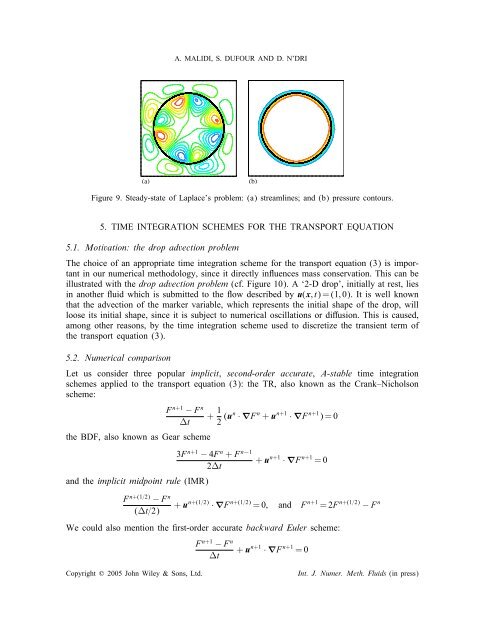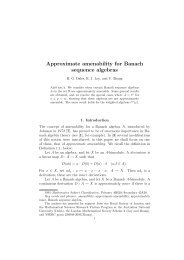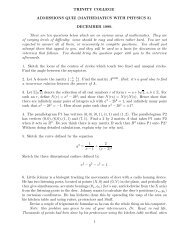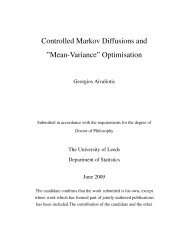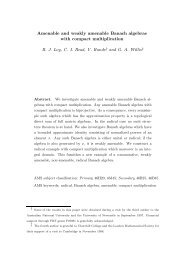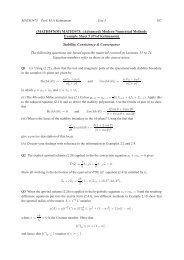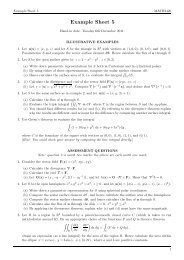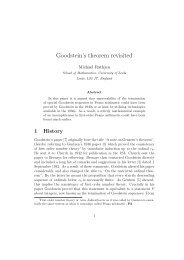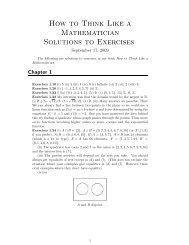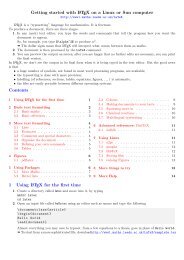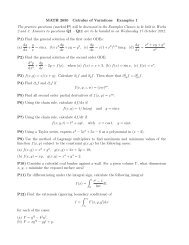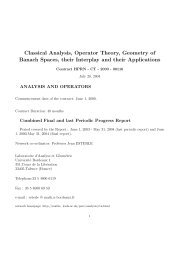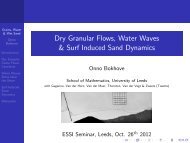A study of time integration schemes for the numerical modelling of ...
A study of time integration schemes for the numerical modelling of ...
A study of time integration schemes for the numerical modelling of ...
Create successful ePaper yourself
Turn your PDF publications into a flip-book with our unique Google optimized e-Paper software.
A. MALIDI, S. DUFOUR AND D. N’DRI(a)(b)Figure 9. Steady-state <strong>of</strong> Laplace’s problem: (a) streamlines; and (b) pressure contours.5. TIME INTEGRATION SCHEMES FOR THE TRANSPORT EQUATION5.1. Motivation: <strong>the</strong> drop advection problemThe choice <strong>of</strong> an appropriate <strong>time</strong> <strong>integration</strong> scheme <strong>for</strong> <strong>the</strong> transport equation (3) is importantin our <strong>numerical</strong> methodology, since it directly inuences mass conservation. This can beillustrated with <strong>the</strong> drop advection problem (cf. Figure 10). A ‘2-D drop’, initially at rest, liesin ano<strong>the</strong>r uid which is submitted to <strong>the</strong> ow described by u(x;t)=(1; 0). It is well knownthat <strong>the</strong> advection <strong>of</strong> <strong>the</strong> marker variable, which represents <strong>the</strong> initial shape <strong>of</strong> <strong>the</strong> drop, willloose its initial shape, since it is subject to <strong>numerical</strong> oscillations or diusion. This is caused,among o<strong>the</strong>r reasons, by <strong>the</strong> <strong>time</strong> <strong>integration</strong> scheme used to discretize <strong>the</strong> transient term <strong>of</strong><strong>the</strong> transport equation (3).5.2. Numerical comparisonLet us consider three popular implicit, second-order accurate, A-stable <strong>time</strong> <strong>integration</strong><strong>schemes</strong> applied to <strong>the</strong> transport equation (3): <strong>the</strong> TR, also known as <strong>the</strong> Crank–Nicholsonscheme:F n+1 − F n+ 1 t 2 (un · ∇F n + u n+1 · ∇F n+1 )=0<strong>the</strong> BDF, also known as Gear scheme3F n+1 − 4F n + F n−1+ u n+1 · ∇F n+1 =02tand <strong>the</strong> implicit midpoint rule (IMR)F n+(1=2) − F n(t=2)+ u n+(1=2) · ∇F n+(1=2) =0; and F n+1 =2F n+(1=2) − F nWe could also mention <strong>the</strong> rst-order accurate backward Euler scheme:F n+1 − F n+ u n+1 · ∇F n+1 =0tCopyright ? 2005 John Wiley & Sons, Ltd.Int. J. Numer. Meth. Fluids (in press)


